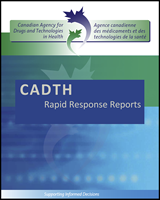Surface contamination in healthcare facilities has been identified as a source of transmission of pathogens and healthcare-associated infections (HAIs). Environmental contamination with pathogens may occur through shedding, and subsequent transmission could be mediated through contact and aerosols from textiles and other sources.1,2 Pathogens have the capability of remaining airborne and viable, or settling and re-suspending for extended periods in the indoor environment.3 Since some pathogens have a low infectious dose, the presence of pathogens in the healthcare environment presents a risk of infection transmission even when the concentration is low.
Pathogens usually associated with HAIs include Clostridium difficile, vancomycin-resistant enterococci (VRE), methicillin-resistant Staphylococcus aureus (MRSA), Acinetobacter baumannii and Pseudomonas aeruginosa.4 Subsequent occupancy of a room previously occupied by a patient colonized or infected by any of these organisms increases the risk of acquiring these pathogens by a factor of two or more.2 A conventional measure to minimize this risk is terminal cleaning and disinfection following the discharge of patients with these pathogens. However, this approach seems inadequate to reduce contamination sufficiently to prevent all transmission, and increased risk of infection to subsequent occupants persists in these cases.5
Healthcare-associated infections are costly, requiring extended hospital stay, increased use of antibiotics, and the need for more rigorous cleaning and disinfection measures which consume additional resource and increase labor cost.1,3,6–8 According to an economic burden study based on published literature from the years 2000 to 2011, the cost per case of hospital-acquired infection ranges from $2,265 to $22,400.8 The estimated annual direct costs of hospital acquired infections in Canada is $1 billion.9 About 8,000 Canadians die from hospital-acquired infections and more than 200,000 others get infected each year.10 Therefore, measures to improve the effectiveness of cleaning and decontamination methods to prevent HAIs are important.
The inadequacy of traditional cleaning methods has been linked to operator errors in relation to improper selection, formulation, distribution, and contact time of the disinfectant. Approaches to improve cleaning effectiveness include educational campaigns, feedback of cleaning performance, routine microbiological analysis of surface hygiene, and the use of fluorescent markers or assays to assess the thoroughness of cleaning. While these measures can improve conventional cleaning efficiency, their sustainability has not been studied.2,5,11 The use of non-manual room disinfection reduces the chances of operator errors associated with traditional cleaning methods and offers the potential for more effective eradication of pathogens to reduce transmission of infections.2,12,13 In this report, non-manual refers to non-touch or automated procedures, or environmentally active agents. A previous Rapid Response report4 found low quality evidence for the effectiveness of VHP and an UV room disinfection system to prevent or reduce infection rates in a healthcare setting.
The aim of this review is to review the available evidence for the clinical and cost-effectiveness of non-manual room disinfection techniques for the prevention of infections in healthcare facilities.

